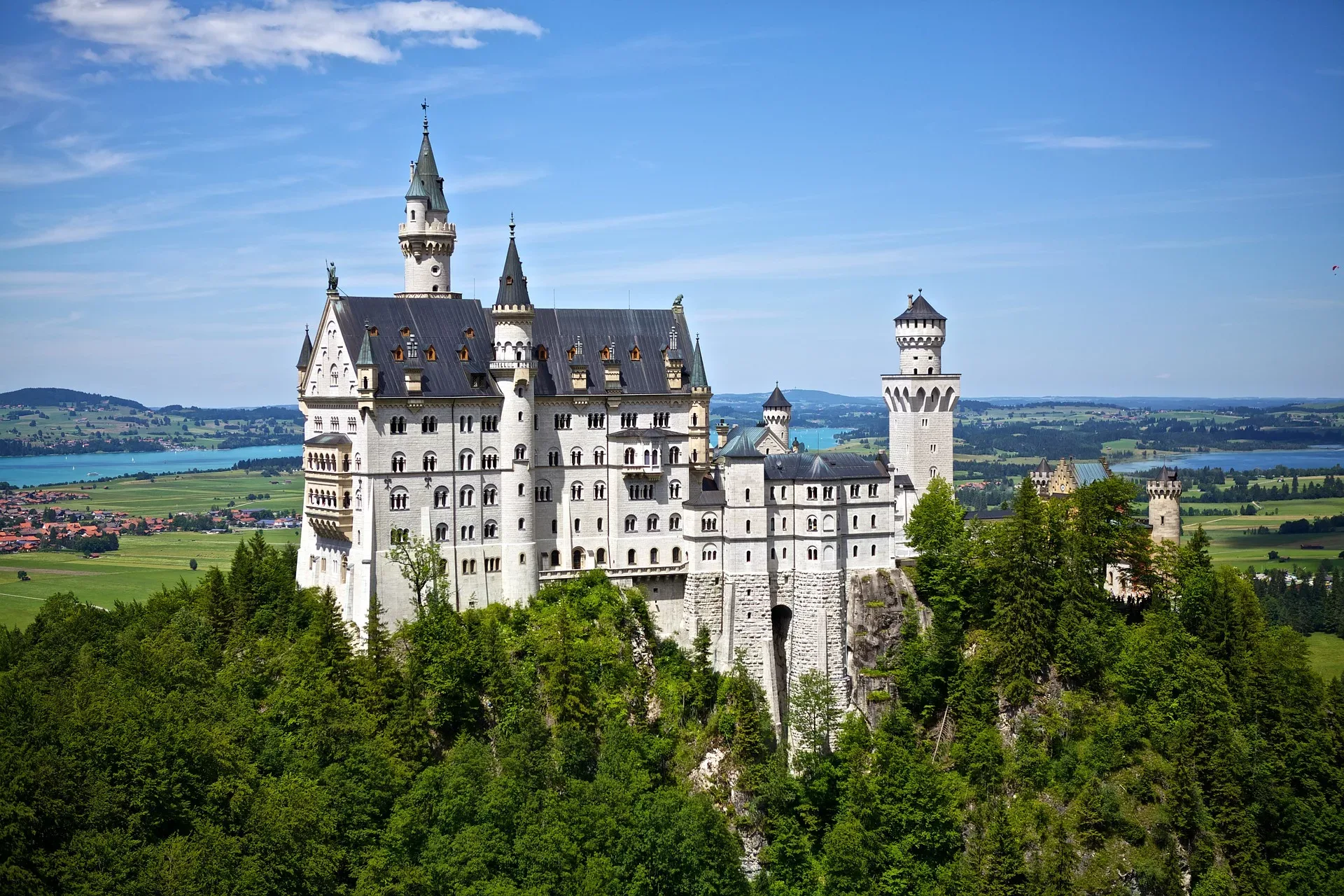Combining a visit to Munich, Neuschwanstein, Dachau, and Rothenburg ob der Tauber with Vienna and Salzburg creates a comprehensive and enriching experience for student groups. Munich, the capital of Bavaria, offers a perfect blend of rich history and vibrant culture. Students can explore historic sites like the Nymphenburg Palace, Marienplatz, and the English Garden. Munich’s artistic and musical scene provides excellent opportunities for student performances in renowned venues.
Neuschwanstein Castle, a fairytale-like fortress nestled in the Bavarian Alps, offers a captivating excursion. Students can marvel at the architectural grandeur and explore the surrounding landscapes. The castle’s picturesque setting provides a unique backdrop for artistic performances.
Dachau, with its solemn history as a concentration camp during World War II, offers a somber yet educational experience. Visiting the memorial site allows students to gain a deeper understanding of the impact of historical events and promotes reflection on the importance of human rights and tolerance.
Rothenburg ob der Tauber, a well-preserved medieval town, offers a step back in time. Cobblestone streets, half-timbered houses, and the medieval architecture create a charming atmosphere. Student groups can explore the town’s history, participate in educational activities, and perhaps even showcase their talents in the town’s historic venues.
When combined with Vienna and Salzburg, this itinerary provides a diverse range of cultural, historical, and educational experiences. Students have the opportunity to immerse themselves in the musical heritage of Vienna and Salzburg, explore the historical significance of Munich, Neuschwanstein, Dachau, and Rothenburg ob der Tauber, and showcase their talents through performances in various iconic locations. Overall, this journey offers a well-rounded and memorable experience for student groups seeking a blend of cultural enrichment and educational exploration in Central Europe.
Top Attractions

Dachau Concentration Camp Memorial Site
Nazi concentration camp memorial & museum, with photographs, documents & reconstructed cell blocks.
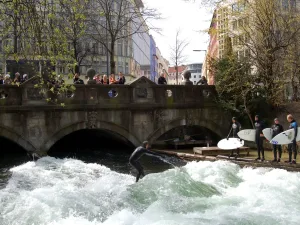
Munich: Eisbach Surfer
The Eisbach is a small, 2-kilometre-long, man-made river in Munich. It flows through the park known as the Englischer Garten, and is a side arm of the Isar River. A man-made wave has been created on one section, which is popular among river surfers.
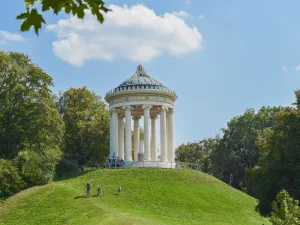
Munich: English Garden
The Englischer Garten is a large public park in the centre of Munich, Bavaria, stretching from the city centre to the northeastern city limits. It was created in 1789 by Sir Benjamin Thompson, later Count Rumford, for Prince Charles Theodore, Elector of Bavaria.
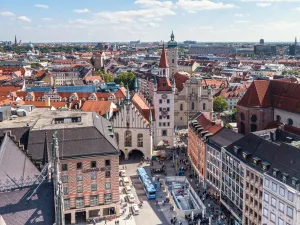
Munich: Marienplatz
Marienplatz is a central square in the city centre of Munich, Germany. It has been the city’s main square since 1158.
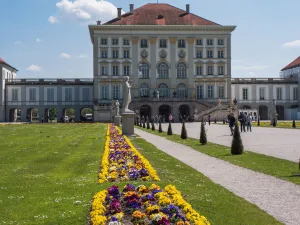
Munich: Nymphenburg Palace
The Nymphenburg Palace is a Baroque palace situated in Munich’s western district Neuhausen-Nymphenburg, in Bavaria, southern Germany. Combined with the adjacent Nymphenburg Palace Park it constitutes one of the premier royal palaces of Europe. Its frontal width of 632 m even surpasses Versailles Palace.
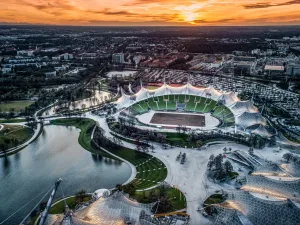
Munich: Olympic Stadium
Olympiastadion is a stadium located in Munich, Germany. Situated at the heart of the Olympiapark München in northern Munich, the stadium was built as the main venue for the 1972 Summer Olympics.
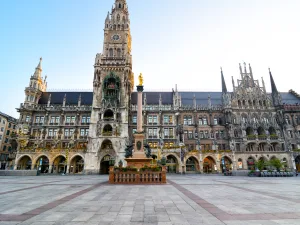
Munich: Rathaus
One of Munich’s most impressive buildings, the New City Hall (Neues Rathaus) on Marienplatz offers fantastic views of the city from its tower. Furthermore, the famous glockenspiel attracts huge crowds every day. Completed in 1905, the New City Hall was built in the then popular Neo-Gothic architectural style.
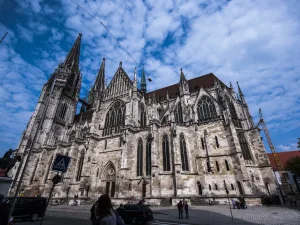
Regensburg: Saint Peters Cathedral
Regensburg Cathedral, also known as St. Peter’s Cathedral, is an example of important Gothic architecture within the German state of Bavaria. It is a landmark for the city of Regensburg, Germany, and the seat of the Catholic Diocese of Regensburg.
The “Domspatzen” boys’ choir (engl. Cathedral Sparrows) dates back to the year 975 and is one of the oldest boys’ choirs in the world. To look at the young boys, it’s hard to imagine the professionalism with which they draw their audiences under their spell. You see the love of music in every face. And hear it as well, of course. Nearly every Sunday, at High Mass in the Cathedral of St Peter.

Rothenburg ob der Tauber
Rothenburg ob der Tauber is a German town in northern Bavaria known for its medieval architecture. Half-timbered houses line the cobblestone lanes of its old town. The town walls include many preserved gate houses and towers, plus a covered walkway on top. St. Jakob’s Church houses an intricate, late Gothic altarpiece by woodcarver Tilman Riemenschneider. The medieval Town Hall has a tower with panoramic views.

Rothenburg ob der Tauber: Wall Walk
Rothenburg’s old quarter has no less than 42 towers. Most are along the city wall, at the six gates into the city and along the fortifications. Inside the old quarter, you can find the towers of the first city wall, the City Hall tower and the towers of St. James. Many sections of the Tower Trail lead along the top of the city wall while a small part also leads around it. In about 2.5 hours, you can find out everything about the city’s defense system during a stroll along the four-kilometer Tower Trail.
Performance Venues

Dachau Concentration Camp Memorial Site
Nazi concentration camp memorial & museum, with photographs, documents & reconstructed cell blocks.

Munich: Eisbach Surfer
The Eisbach is a small, 2-kilometre-long, man-made river in Munich. It flows through the park known as the Englischer Garten, and is a side arm of the Isar River. A man-made wave has been created on one section, which is popular among river surfers.

Munich: English Garden
The Englischer Garten is a large public park in the centre of Munich, Bavaria, stretching from the city centre to the northeastern city limits. It was created in 1789 by Sir Benjamin Thompson, later Count Rumford, for Prince Charles Theodore, Elector of Bavaria.

Munich: Marienplatz
Marienplatz is a central square in the city centre of Munich, Germany. It has been the city’s main square since 1158.

Munich: Nymphenburg Palace
The Nymphenburg Palace is a Baroque palace situated in Munich’s western district Neuhausen-Nymphenburg, in Bavaria, southern Germany. Combined with the adjacent Nymphenburg Palace Park it constitutes one of the premier royal palaces of Europe. Its frontal width of 632 m even surpasses Versailles Palace.

Munich: Olympic Stadium
Olympiastadion is a stadium located in Munich, Germany. Situated at the heart of the Olympiapark München in northern Munich, the stadium was built as the main venue for the 1972 Summer Olympics.

Munich: Rathaus
One of Munich’s most impressive buildings, the New City Hall (Neues Rathaus) on Marienplatz offers fantastic views of the city from its tower. Furthermore, the famous glockenspiel attracts huge crowds every day. Completed in 1905, the New City Hall was built in the then popular Neo-Gothic architectural style.

Regensburg: Saint Peters Cathedral
Regensburg Cathedral, also known as St. Peter’s Cathedral, is an example of important Gothic architecture within the German state of Bavaria. It is a landmark for the city of Regensburg, Germany, and the seat of the Catholic Diocese of Regensburg.
The “Domspatzen” boys’ choir (engl. Cathedral Sparrows) dates back to the year 975 and is one of the oldest boys’ choirs in the world. To look at the young boys, it’s hard to imagine the professionalism with which they draw their audiences under their spell. You see the love of music in every face. And hear it as well, of course. Nearly every Sunday, at High Mass in the Cathedral of St Peter.

Rothenburg ob der Tauber
Rothenburg ob der Tauber is a German town in northern Bavaria known for its medieval architecture. Half-timbered houses line the cobblestone lanes of its old town. The town walls include many preserved gate houses and towers, plus a covered walkway on top. St. Jakob’s Church houses an intricate, late Gothic altarpiece by woodcarver Tilman Riemenschneider. The medieval Town Hall has a tower with panoramic views.

Rothenburg ob der Tauber: Wall Walk
Rothenburg’s old quarter has no less than 42 towers. Most are along the city wall, at the six gates into the city and along the fortifications. Inside the old quarter, you can find the towers of the first city wall, the City Hall tower and the towers of St. James. Many sections of the Tower Trail lead along the top of the city wall while a small part also leads around it. In about 2.5 hours, you can find out everything about the city’s defense system during a stroll along the four-kilometer Tower Trail.
Events

Dachau Concentration Camp Memorial Site
Nazi concentration camp memorial & museum, with photographs, documents & reconstructed cell blocks.

Munich: Eisbach Surfer
The Eisbach is a small, 2-kilometre-long, man-made river in Munich. It flows through the park known as the Englischer Garten, and is a side arm of the Isar River. A man-made wave has been created on one section, which is popular among river surfers.

Munich: English Garden
The Englischer Garten is a large public park in the centre of Munich, Bavaria, stretching from the city centre to the northeastern city limits. It was created in 1789 by Sir Benjamin Thompson, later Count Rumford, for Prince Charles Theodore, Elector of Bavaria.

Munich: Marienplatz
Marienplatz is a central square in the city centre of Munich, Germany. It has been the city’s main square since 1158.

Munich: Nymphenburg Palace
The Nymphenburg Palace is a Baroque palace situated in Munich’s western district Neuhausen-Nymphenburg, in Bavaria, southern Germany. Combined with the adjacent Nymphenburg Palace Park it constitutes one of the premier royal palaces of Europe. Its frontal width of 632 m even surpasses Versailles Palace.

Munich: Olympic Stadium
Olympiastadion is a stadium located in Munich, Germany. Situated at the heart of the Olympiapark München in northern Munich, the stadium was built as the main venue for the 1972 Summer Olympics.

Munich: Rathaus
One of Munich’s most impressive buildings, the New City Hall (Neues Rathaus) on Marienplatz offers fantastic views of the city from its tower. Furthermore, the famous glockenspiel attracts huge crowds every day. Completed in 1905, the New City Hall was built in the then popular Neo-Gothic architectural style.

Regensburg: Saint Peters Cathedral
Regensburg Cathedral, also known as St. Peter’s Cathedral, is an example of important Gothic architecture within the German state of Bavaria. It is a landmark for the city of Regensburg, Germany, and the seat of the Catholic Diocese of Regensburg.
The “Domspatzen” boys’ choir (engl. Cathedral Sparrows) dates back to the year 975 and is one of the oldest boys’ choirs in the world. To look at the young boys, it’s hard to imagine the professionalism with which they draw their audiences under their spell. You see the love of music in every face. And hear it as well, of course. Nearly every Sunday, at High Mass in the Cathedral of St Peter.

Rothenburg ob der Tauber
Rothenburg ob der Tauber is a German town in northern Bavaria known for its medieval architecture. Half-timbered houses line the cobblestone lanes of its old town. The town walls include many preserved gate houses and towers, plus a covered walkway on top. St. Jakob’s Church houses an intricate, late Gothic altarpiece by woodcarver Tilman Riemenschneider. The medieval Town Hall has a tower with panoramic views.

Rothenburg ob der Tauber: Wall Walk
Rothenburg’s old quarter has no less than 42 towers. Most are along the city wall, at the six gates into the city and along the fortifications. Inside the old quarter, you can find the towers of the first city wall, the City Hall tower and the towers of St. James. Many sections of the Tower Trail lead along the top of the city wall while a small part also leads around it. In about 2.5 hours, you can find out everything about the city’s defense system during a stroll along the four-kilometer Tower Trail.

